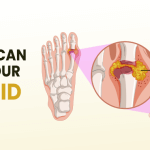Table of Contents
Antispasmodics (Spasmolytic)
- Drug that suppresses muscle spasms (relaxes muscles)
- Used for smooth muscle contraction, especially in tubular organs of the gastrointestinal tract (and genitourinary tract)
- Spasm also seen in movement disorders featuring spasticity in neurologic conditions- Cerebral Palsy, Multiple Sclerosis and Spinal Cord disease
Classification of Antispasmodics:
ANTICHOLINERGIC/ANTIMUSCARINIC AGENTS
|
|
|
|
|
|
|
|
|
|
|
|
|
|
|
SMOOTH MUSCLE RELAXANTS
|
|
|
OTHERS
- Low dose Amitriptyline (10-25 mg at night) in patients who do not respond to antispasmodics Bamboo shoots
- Peppermint oil
- Relaxation therapy, hypnotherapy and cognitive behaviour therapy have a place in selected cases
Why not Opioids?
- These drugs themselves cause spasm of visceral smooth muscle and have a simultaneous action tending to increase the pain
- An antimuscarinic drug such as atropine or Hyoscine may be given simultaneously to antagonize this effect
- Atropine is less effective in biliary colic, not able to completely counteract biliary spasm due to opiates (nitrates are more effective)
MOA OF ANTICHOLINERGIC AGENT
- Parasympathetic nerves enhance both tone and motility
- Reduced the tone and amplitude of contractions of stomach and intestine – the passage of chyme is slowed—spasm relieved (Constipation may occur)
- Atropine completely abolish the effects of ACh (and other parasympathomimetic drugs) on GI motility and secretion
- Inhibits incompletely the gastrointestinal responses to vagal stimulation
- Relatively large doses needed to produce such inhibition
- Enteric nervous system regulate motility independently of parasympathetic control
- Parasympathetic nerves serve only to modulate the effects of the enteric nervous system
HYOSCINE BUTYL BROMIDE
- 20–40 mg oral, i.m., s.c., i.v.; (10 mg tab., 20 mg/ml amp.)
ATROPINE METHONITRATE
- 2.5–10 mg oral, i.m
- For abdominal colics and hyperacidity
CLIDINIUM
- 2.5–5 mg oral
- Antisecretory antispasmodic used in combination with benzodiazepines for nervous dyspepsia, gastritis, irritable bowel syndrome, colic, peptic ulcer
PIPENZOLATE METHYL BROMIDE
- 5–10 mg (children 2–3 mg) oral
- Promoted especially for flatulent dyspepsia, infantile colics and abdominal cramps
Dicyclomine
- 20 mg oral/i.m., children 5–10 mg
- Direct smooth muscle relaxant action in addition to weak anticholinergic
- Exerts antispasmodic action at doses which produce few atropinic side effects
- Infants have exhibited atropinic toxicity symptoms and not recommended below 6 months of age
Mebeverine
-
- Reserpine derivative
- Muscolotropic spasmolytic with a strong and selective action on the smooth muscle spasm of the gastrointestinal tract, particularly of the colon
- Direct effect on colonic muscle activity, especially, it appears, on colonic hypermotility
- Does not possess antimuscarinic activity
- Does not exhibit the troublesome unwanted effects of that group of drugs
Papaverine
-
- Opium alkaloid used to treat visceral spasms
- Experimental importance
Drotaverine
-
- Novel non-anticholinergic smooth muscle antispasmodic
- Acts by inhibiting phosphodiesterase-4 (PDE-4) selective for smooth muscle
- Elevation of intracellular cAMP/cGMP attends smooth muscle relaxation
- Used orally as well as parenterally in intestinal, biliary and renal colics, irritable bowel syndrome, uterine spasms, etc. without anticholinergic side effects
Adverse effects:
Headache, dizziness, constipation and flushing
Fall in BP on i.v. injection
-
- Dose: 40–80 mg TDS, 40 mg/2 ml inj


